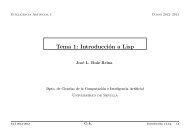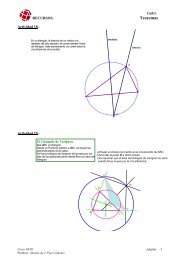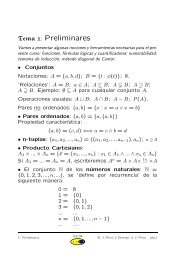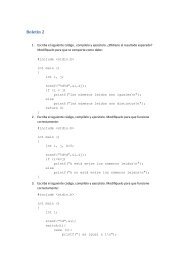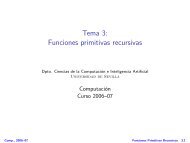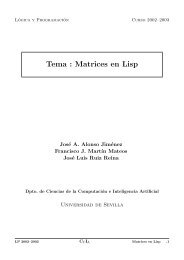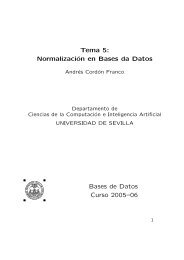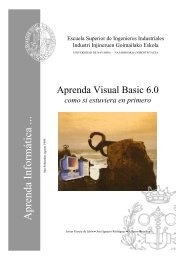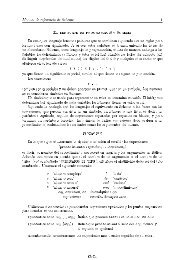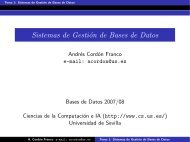Tema Lisp - Dpto. Ciencias de la Computación e Inteligencia Artificial.
Tema Lisp - Dpto. Ciencias de la Computación e Inteligencia Artificial.
Tema Lisp - Dpto. Ciencias de la Computación e Inteligencia Artificial.
You also want an ePaper? Increase the reach of your titles
YUMPU automatically turns print PDFs into web optimized ePapers that Google loves.
Funciones como argumentos <strong>de</strong> entrada: FUNCALL y APPLY<br />
1<br />
La función FUNCALL<br />
(FUNCALL FN E-1 ... E-N)<br />
(funcall #’+ 1 2 3) => 6<br />
(funcall #’cuadrado 4) => 16<br />
(funcall #’(<strong>la</strong>mbda (x) (* 2 x)) 3) => 6<br />
1<br />
La función APPLY<br />
(APPLY FN ARGS)<br />
(apply #’+ ’(1 2 3)) => 6<br />
(apply #’max ’(4 5 7)) => 7<br />
(apply #’(<strong>la</strong>mbda (x y) (* 2 x y)) ’(3 4)) => 24<br />
1<br />
Observaciones:<br />
✉<br />
El primer argumento <strong>de</strong> funcall y <strong>de</strong> apply <strong>de</strong>be ser algo cuyo valor sea una función<br />
✉<br />
Uso <strong>de</strong> #’ para forzar a obtener el valor funcional<br />
✉<br />
A veces es necesario symbol-function<br />
IA-I 2003–2004 CcIa Introducción a <strong>Lisp</strong> <strong>Lisp</strong>.54



